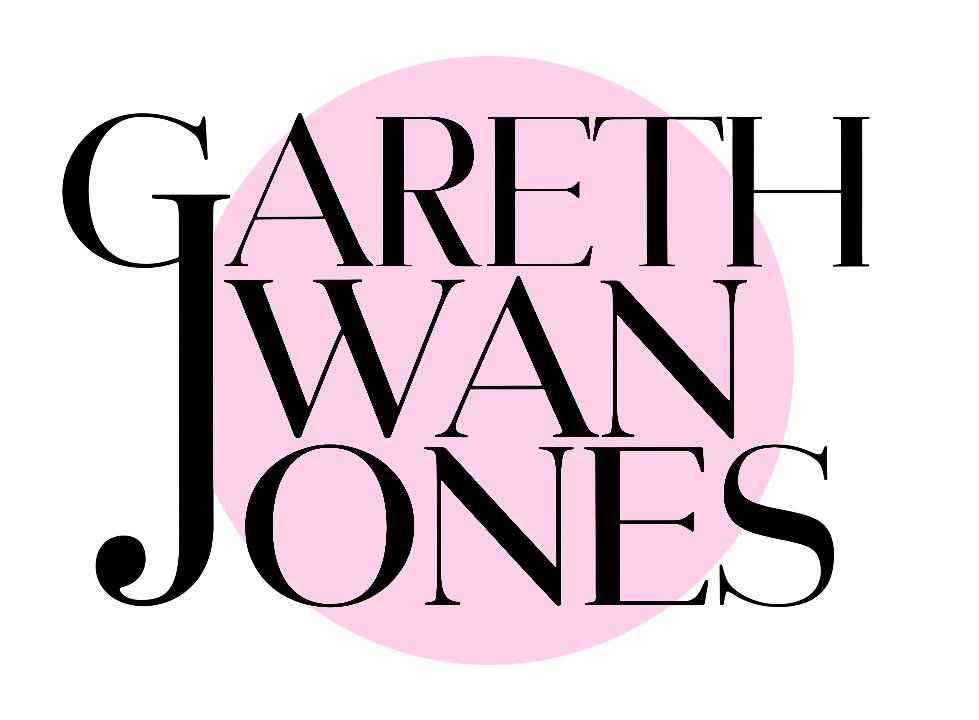Sony A7r II vs Pentax 645Z vs Canon 5dmk III
The new Sony A7r II
I've recently taken hold of a new Sony A7r II. I've used it on a couple of photography jobs, played around with it a fair amount and I'm happy to report I've been very impressed with it as a pro use camera on commissions. I wanted to try a side by side comparison of the Sony A7rII next to my Pentax 645Z. Looking at the everyday raw files coming out of the Sony I was interested to see how they stacked up against the Pentax. The Pentax is well regarded as having one of, if not the best performing sensor in any camera available today. It's worth bearing in mind that the Sony costs roughly £2500 whilst the Pentax comes in at around £7000 (bodies only).
For an additional comparison I've added in my workhorse of the last couple of years, the 5d mkIII. This is by no means scientific or precision testing, I'll happily admit it's quick and dirty, but it is close to a real world example of my everyday shooting.
I took my three pro cameras: the Sony A7r II, Pentax 645z and the 5d mk3 and attempted a side by side comparison of their RAW image quality. In the first test I shot with a wide aperture at low ISO. In the second test the images are underexposed by three stops and recovered in post. The final set up is a straight high ISO test to see how they all behaved shooting a very contrasty scene.
With the cameras tripod mounted, the first shots were shot at 100 ISO, f/2.8 and 1/125 with a large flash right of camera. The Sony and the Canon have a Canon 50mm f/1.2 (Meta-bones Adapter MK IV on the Sony) and on the Pentax I used a 55mm f2.8 (equivalent to 45mm focal length on full frame 35mm). The focal distances and ratios are not identical but close enough to get a real world idea.
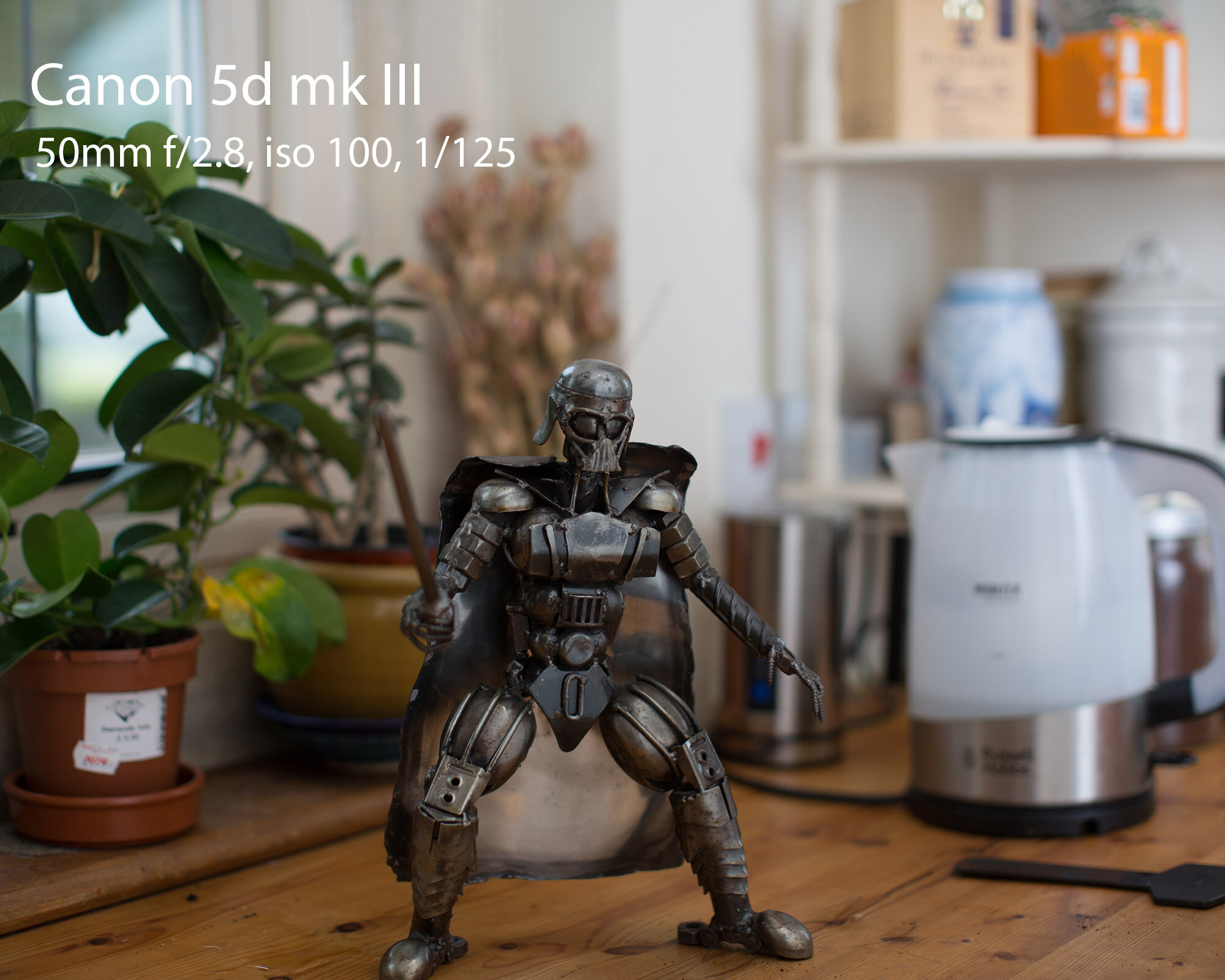
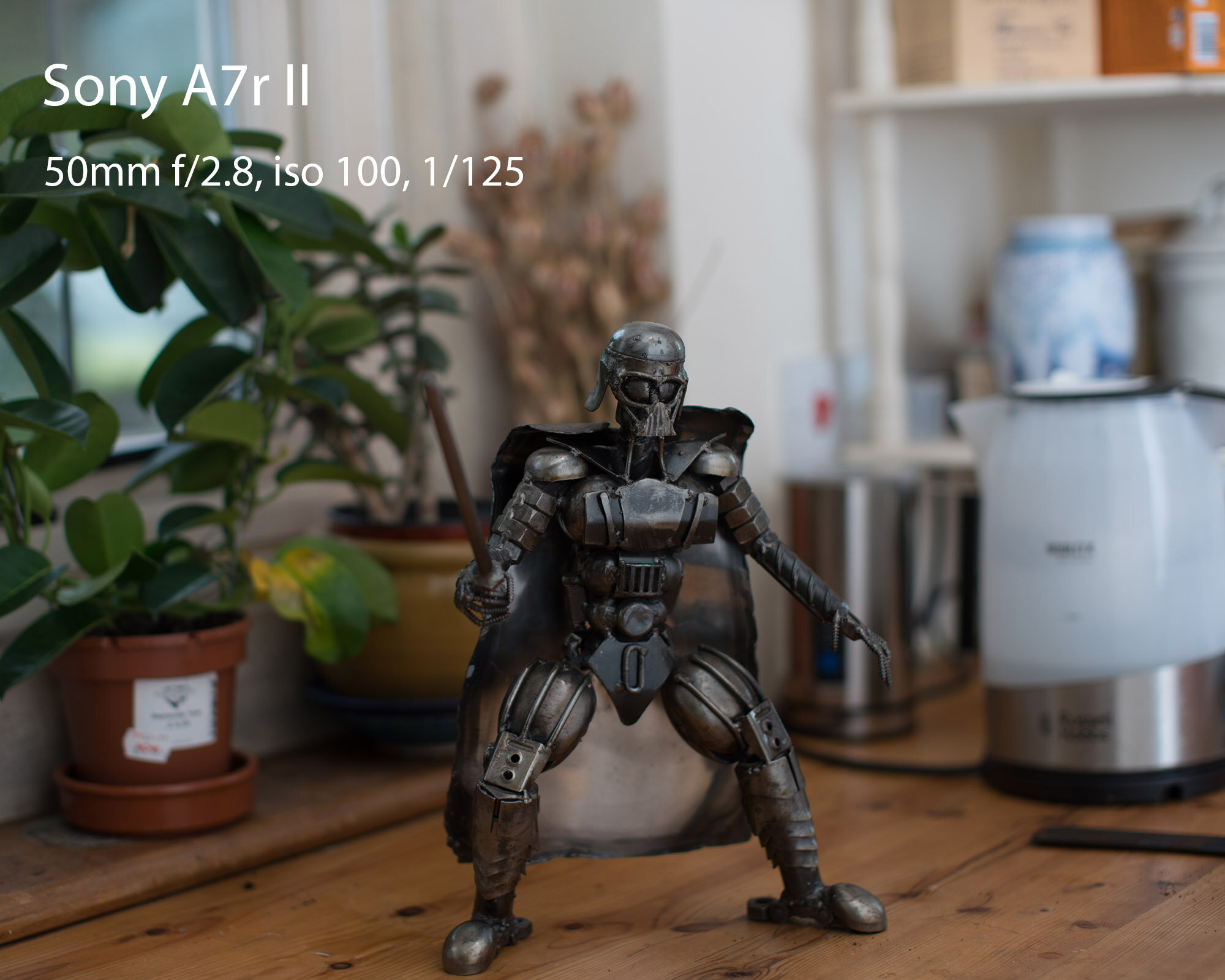
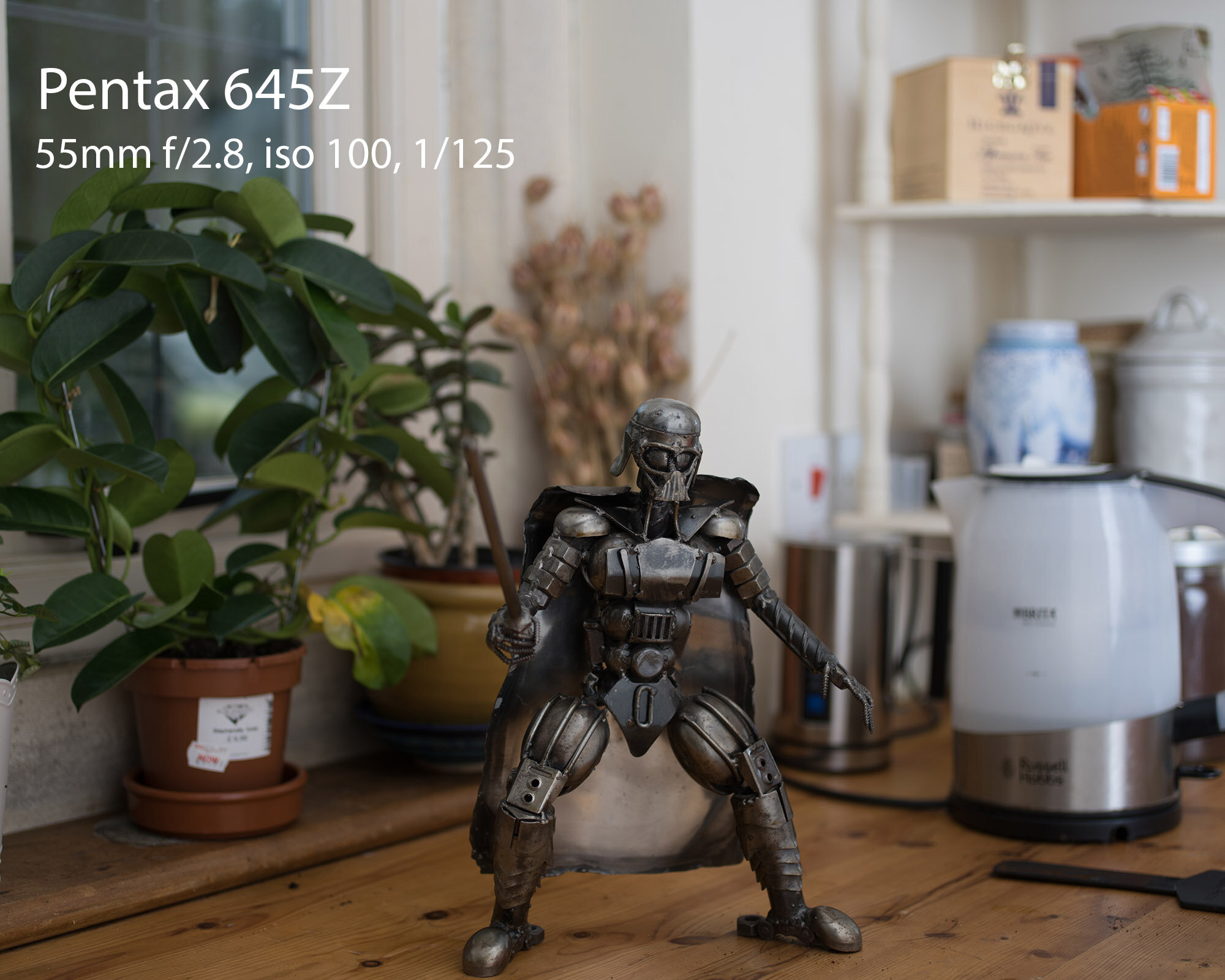
Below are the same shots at 100% crop...
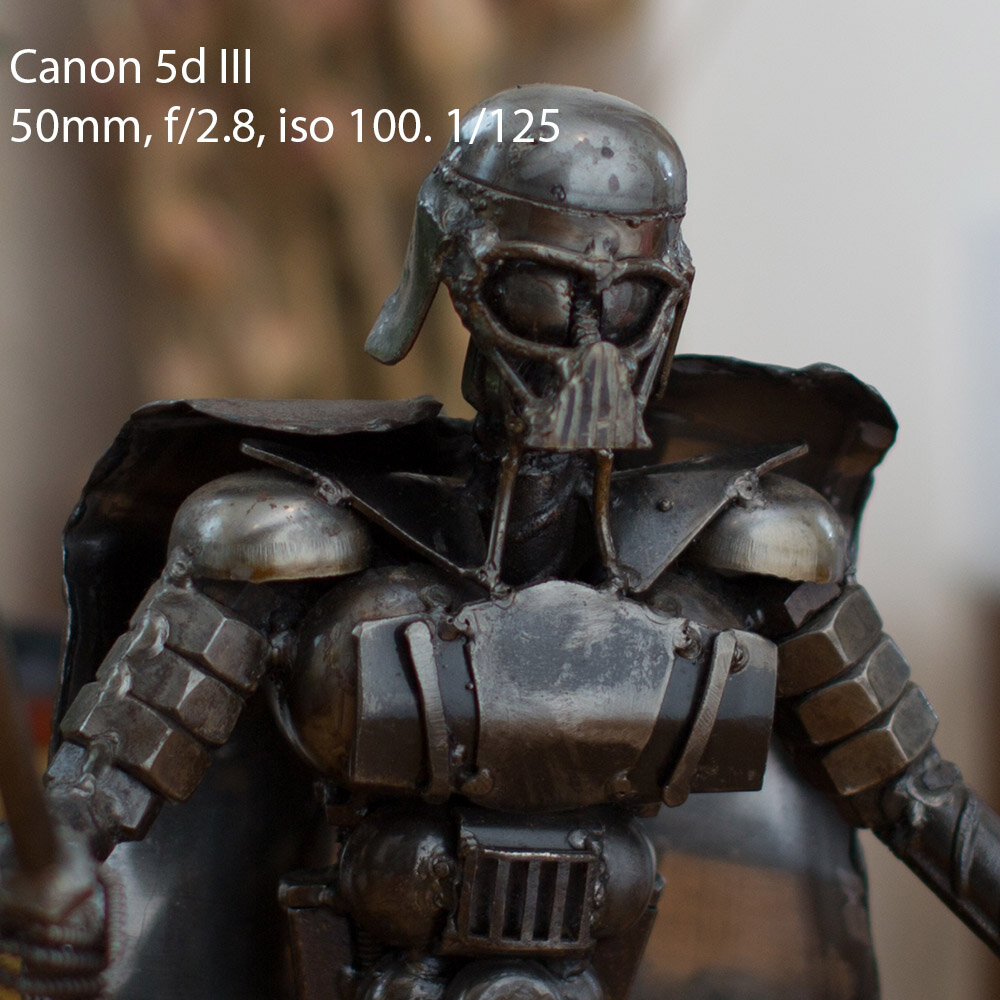
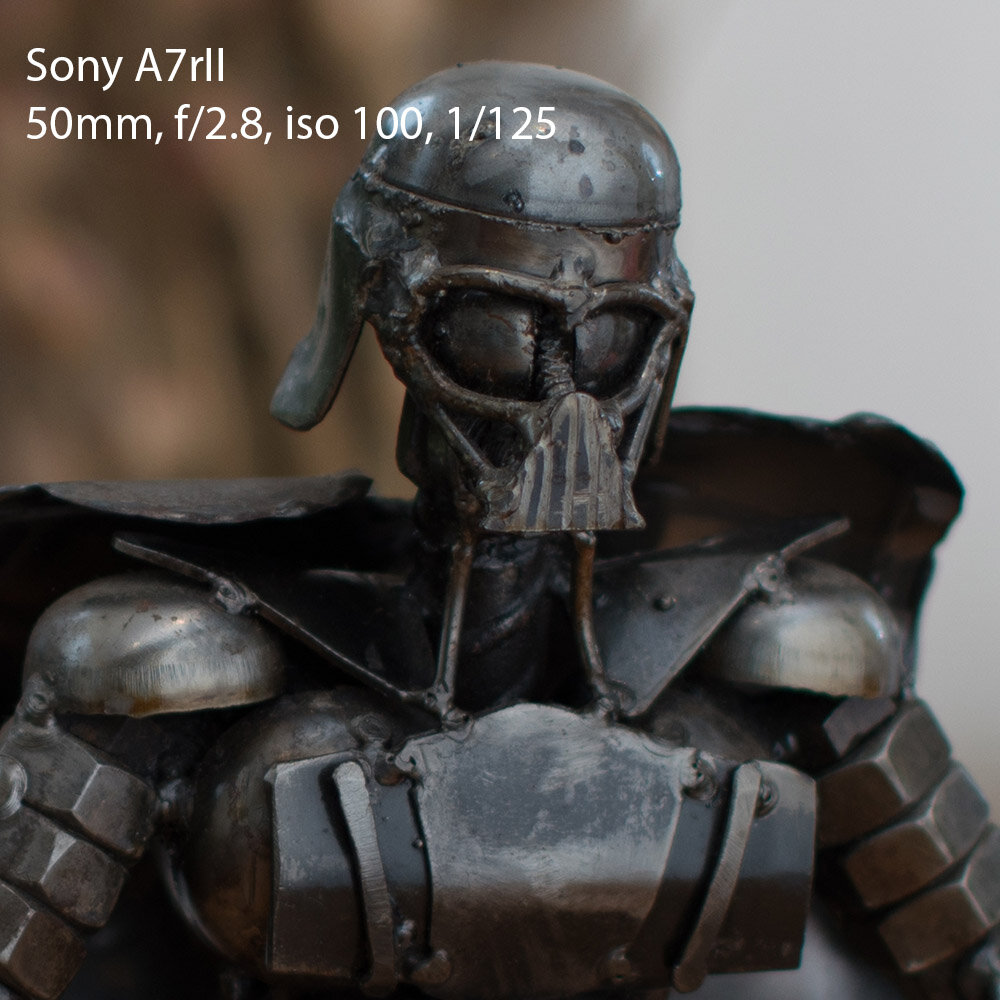

The next test involved underexposing the same frame as above by 3 stops and recovering the exposure in post production (Ligthroom cc). I'm only going to show the 100% crops as it gives a clearer picture of how the sensor is behaving.
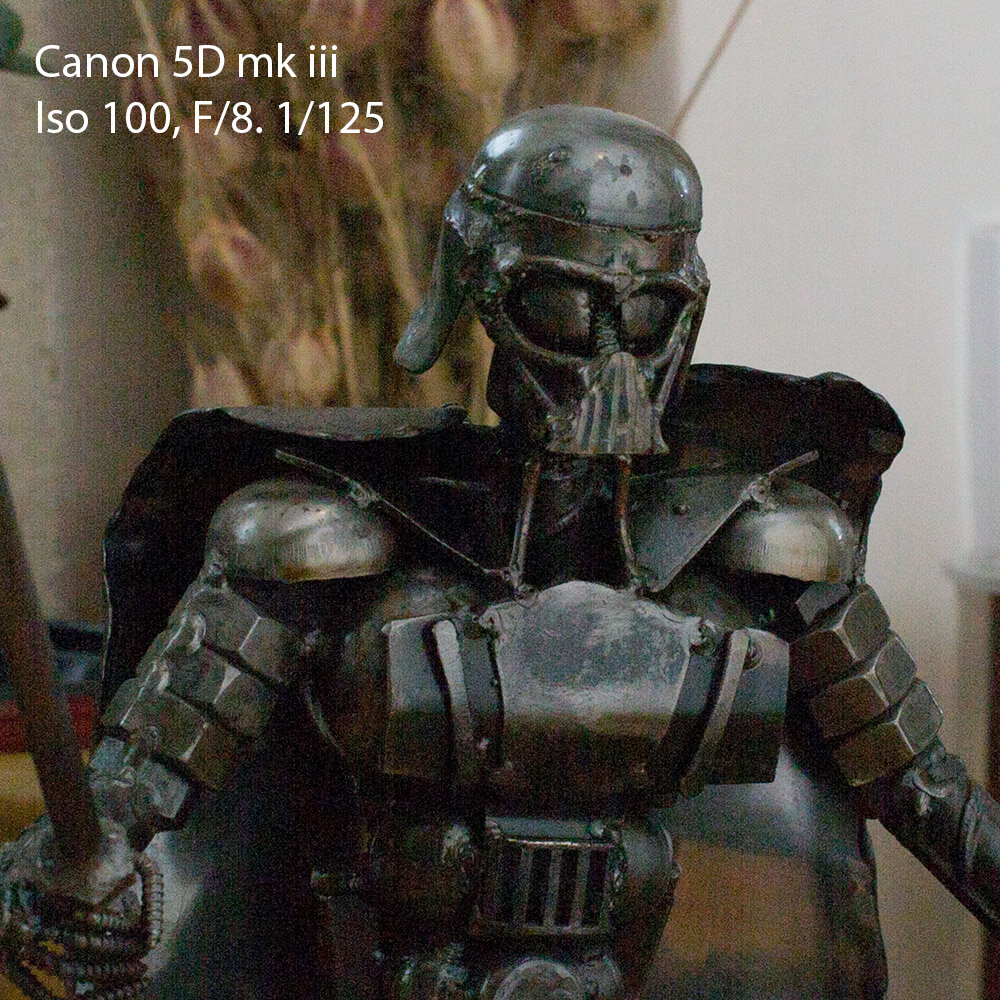
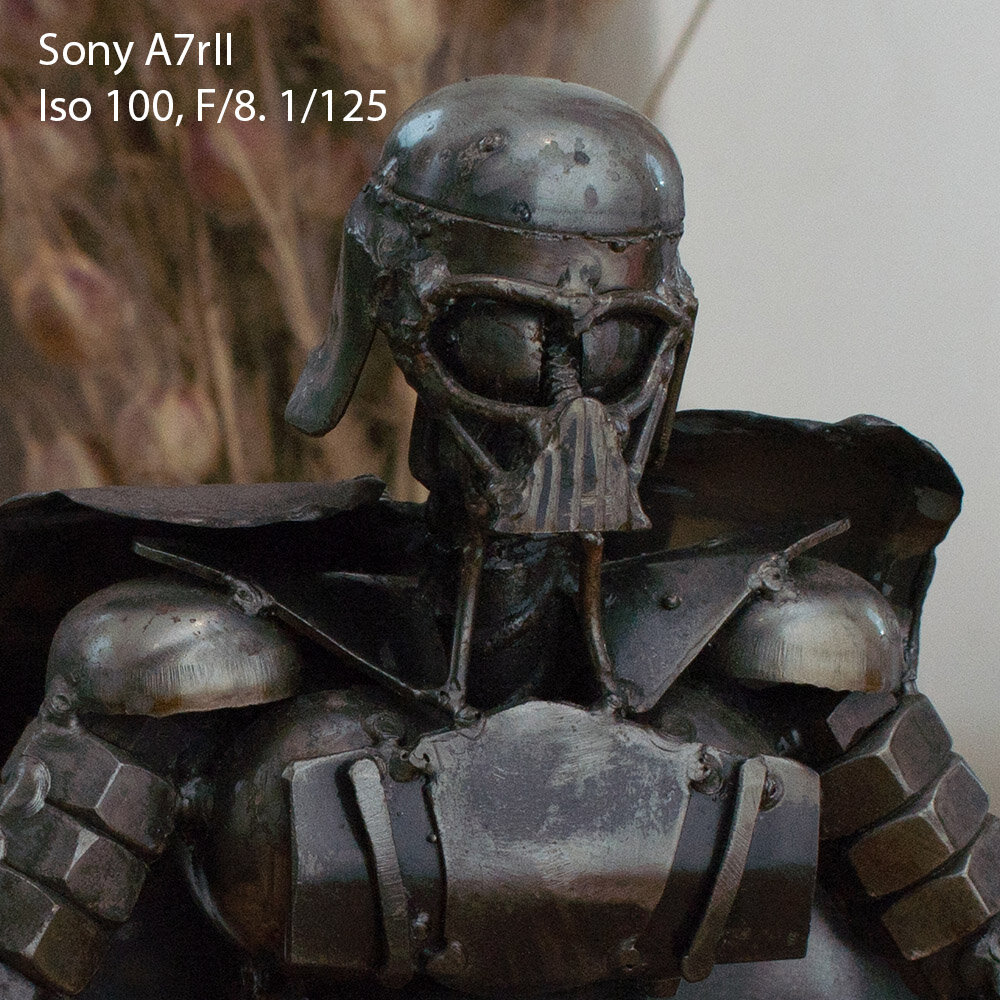
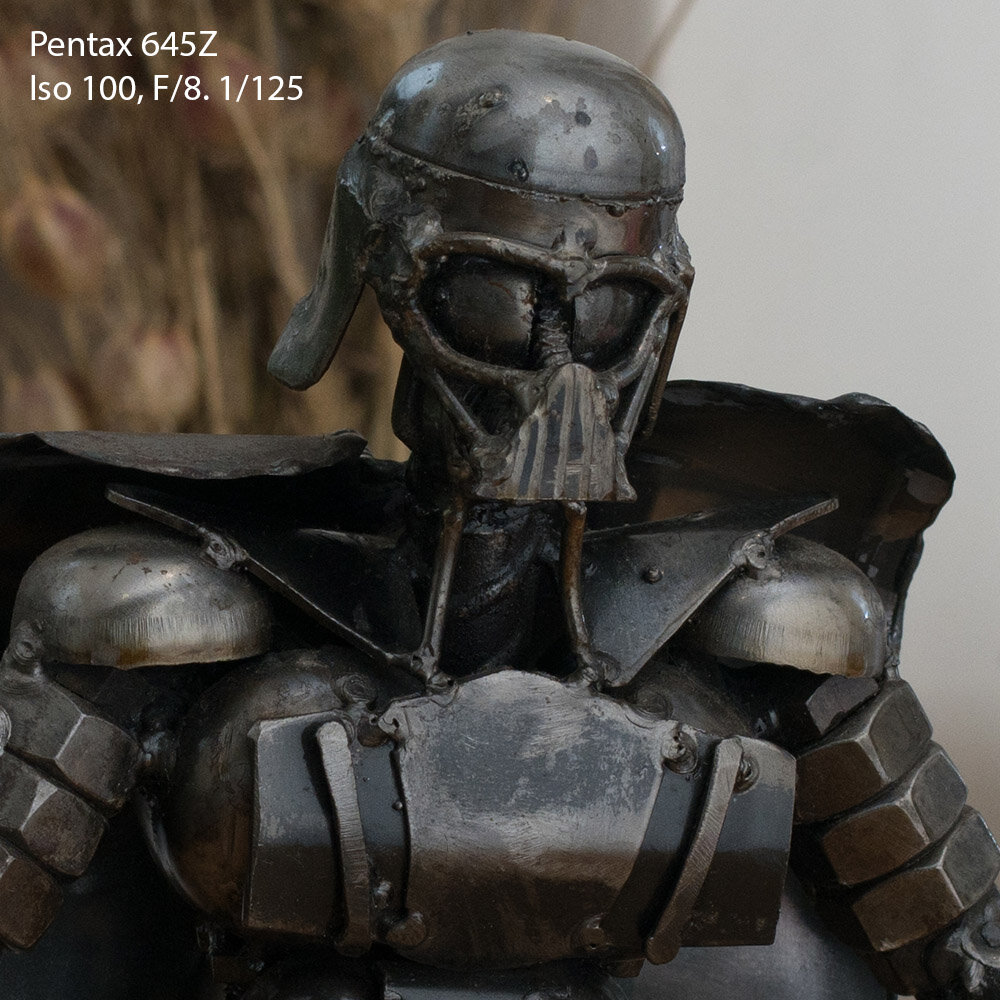
As you can see the Pentax's ability to recover information smoothly from underexposed images is pretty impressive.
Next up a different set up, can you spot the recurring theme? The Sith Lord makes for a nice contrasty image to try out the high ISO's on these cameras. No flash this time just the ambient light.
The photograph below is the full size image, but again I've only concentrated on 100% crops. The resolution on the Pentax and Sony is almost double that of the Canon, which is why the crops are not identical.
Firstly ISO 1600 at 100% crop
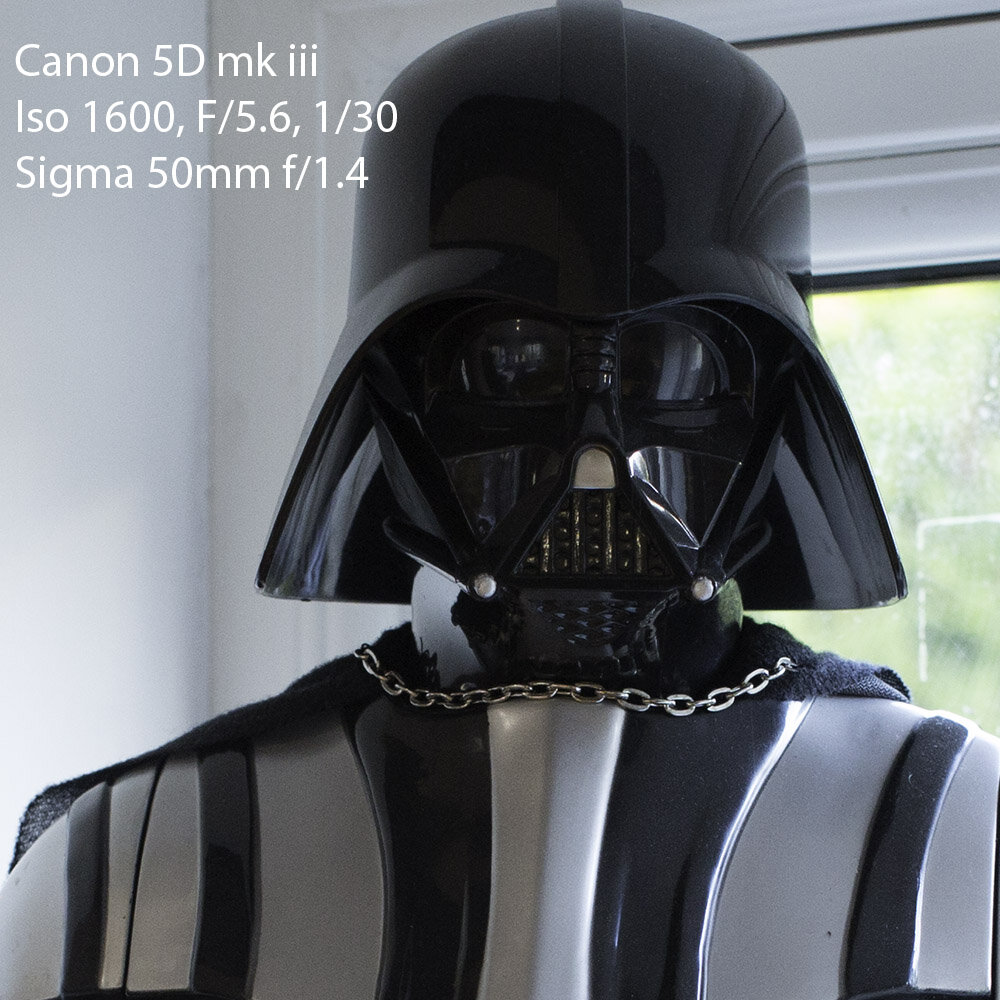
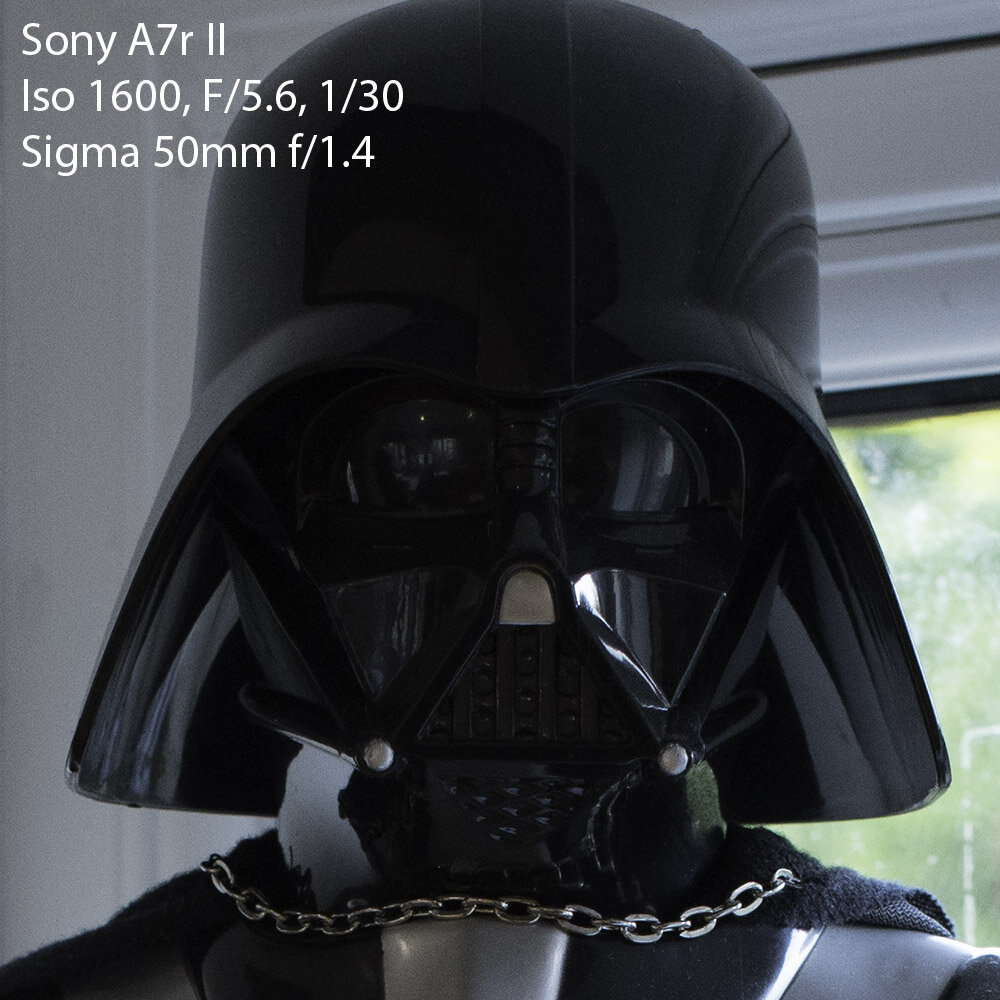
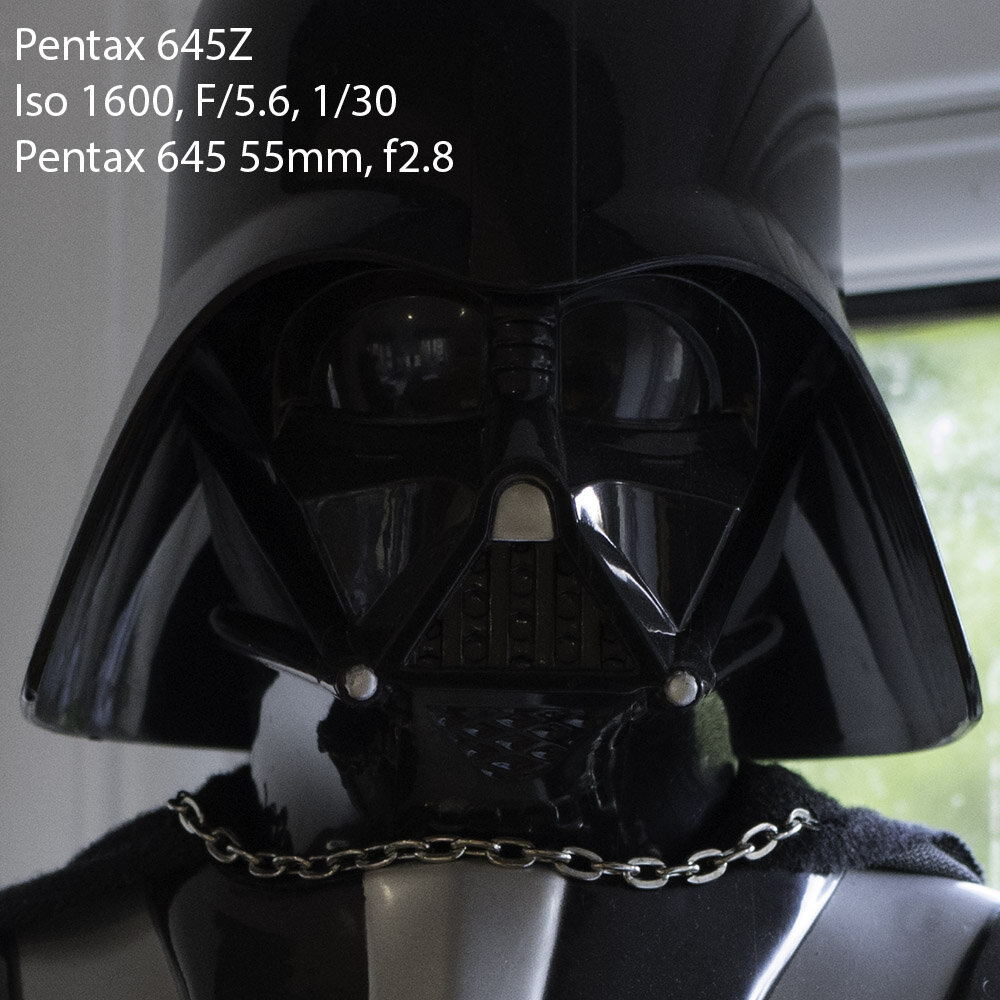
Secondly ISO 3200
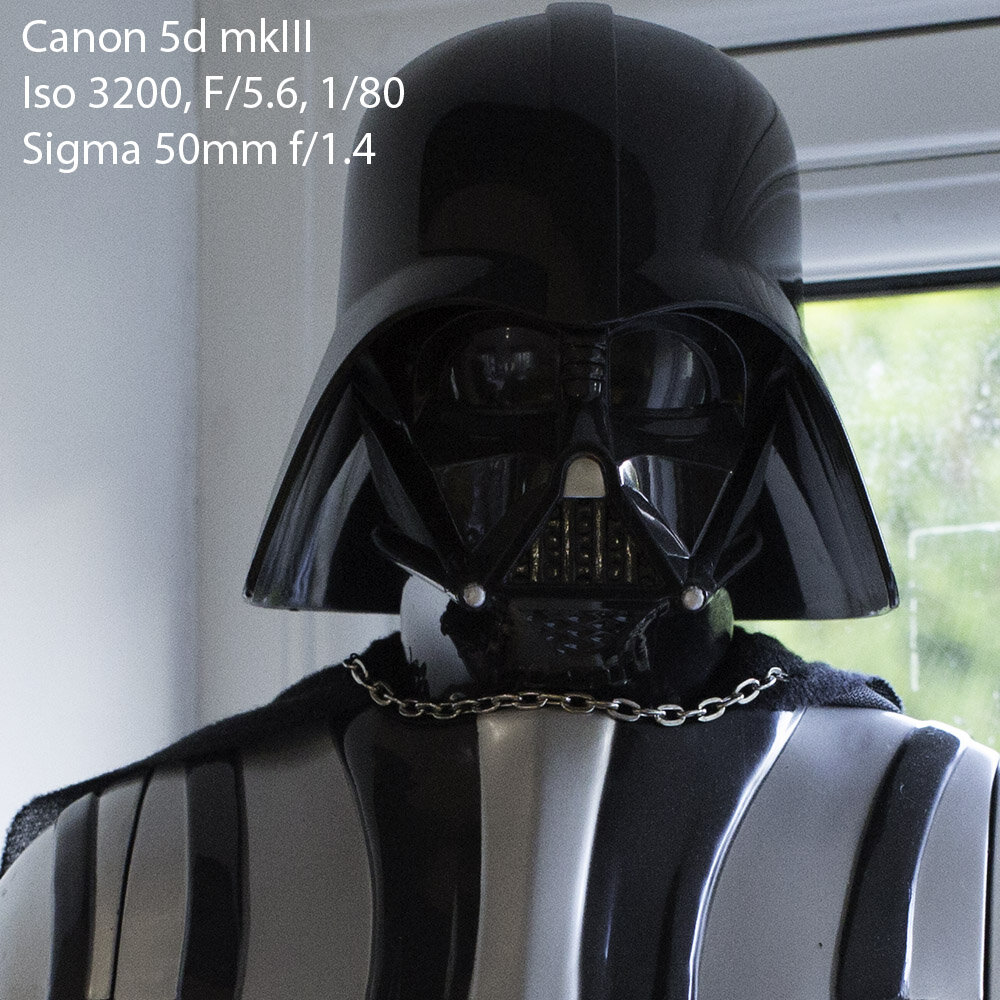
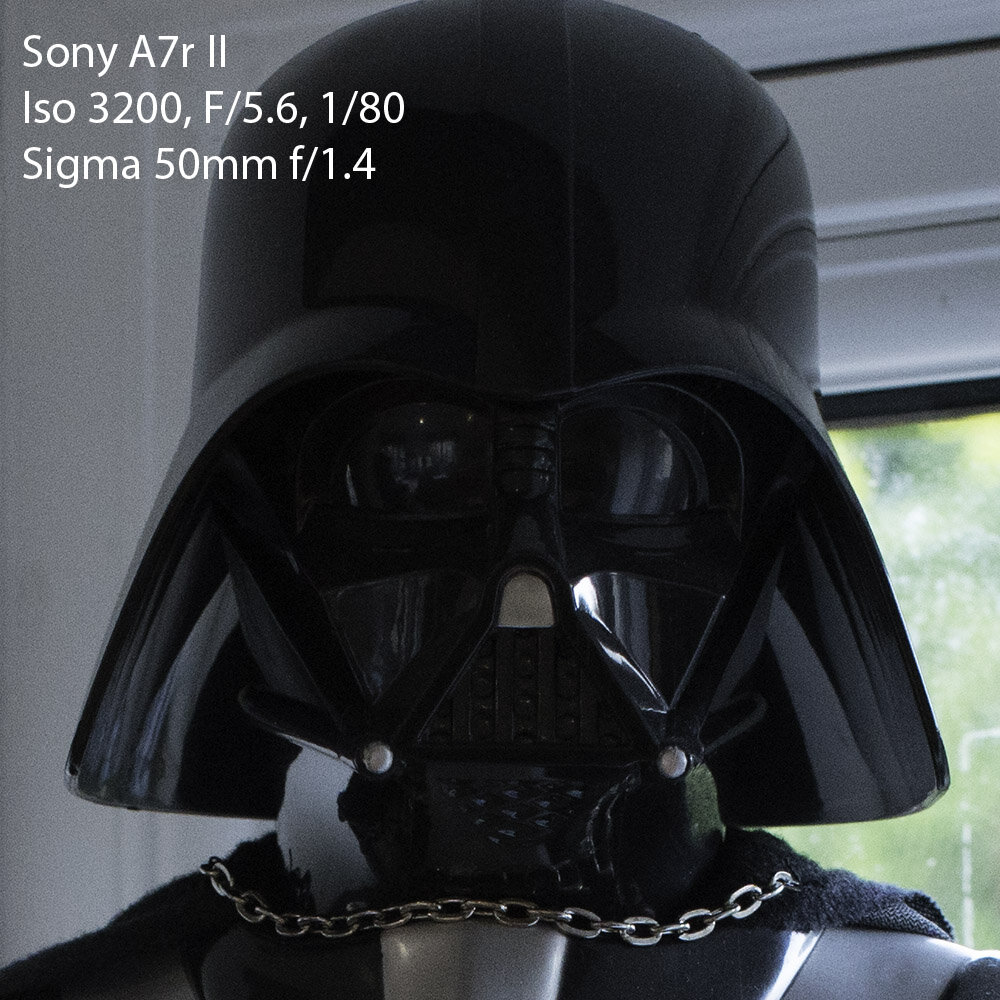
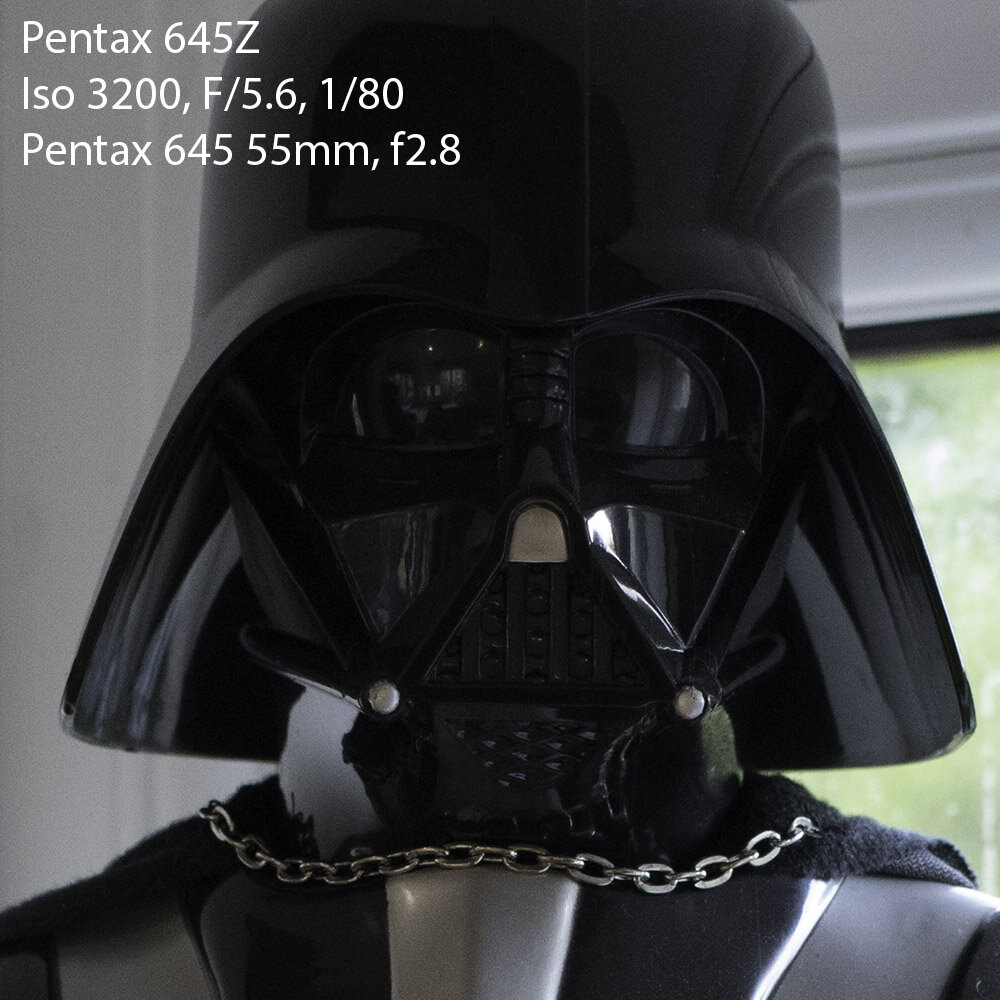
And finally ISO6400

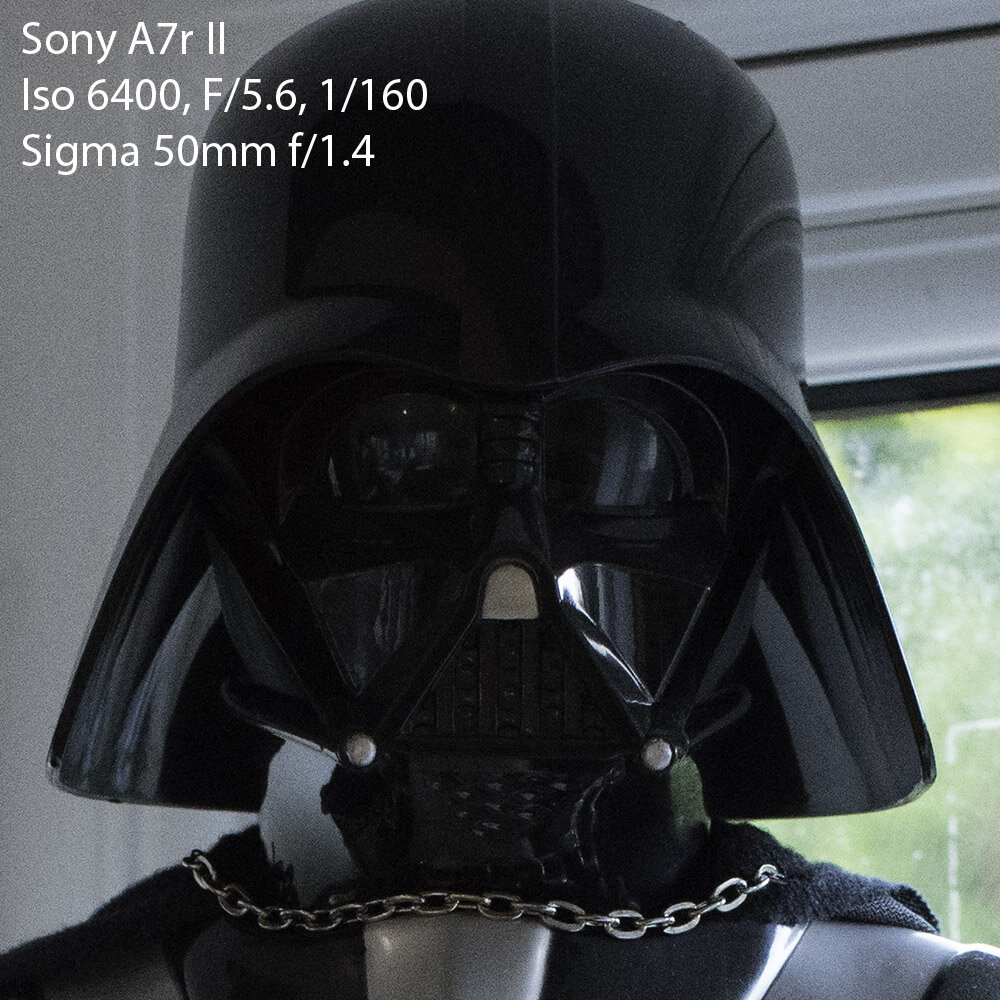

For me there is not a huge difference between the three cameras when testing the noise at high ISO. There is a difference, but it's not as big as I would have predicted. The Pentax clearly is better at handling noise, which you would expect given the bigger sensor size.
The biggest surprise for me was that the Canon behaves almost as well as the Sony at high ISO. I was expecting a bigger difference between those cameras. Below is a side by side comparison of the Sony and the Canon at ISO6400 with the same crop factor below.
You can see the Sony is ever so slightly less noisy but I would be hard pushed to tell them apart.
Make what you will of these shots. I'm not a huge believer in Pixel Peeping, I think in real world application these things are made virtually irrelevant by post production. It's reassuring that the Pentax has outperformed the other cameras, given the amount it cost me.
One final thing worth mentioning and probably the main reasons I bought the Sony A7rII, is the physical size and weight of the cameras. As demonstrated by the image below, the Sony is half the size of the Canon and almost a third the size of the Pentax. Size is becoming more and more important to me. Coupled with the weight differences, I think the Sony will quickly become my go to camera on shoots.
